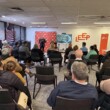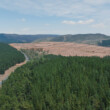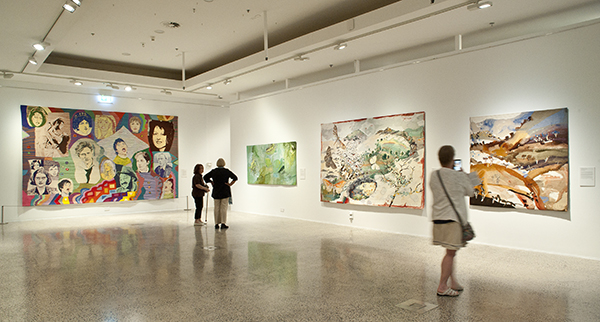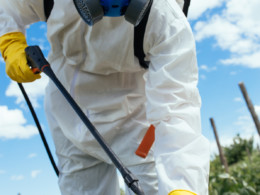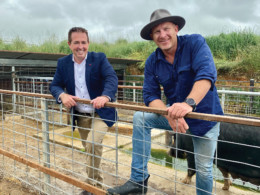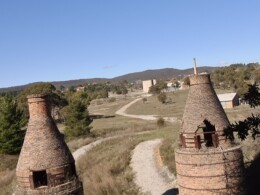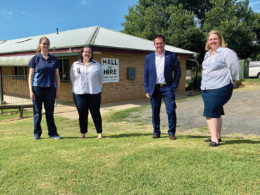Myall Creek and Beyond
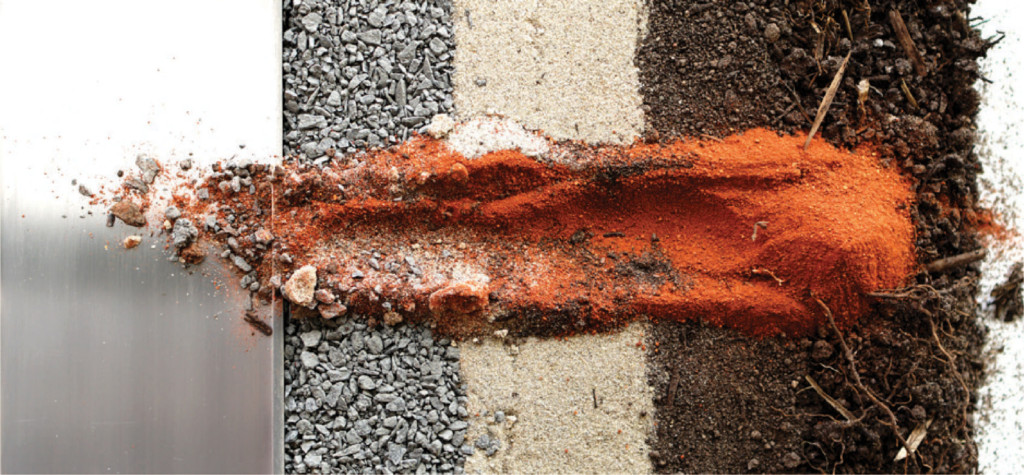
A significant exhibition exploring the history and site of the 1838 Myall Creek Massacre through the work of some of Australia’s leading Aboriginal artists is expected to challenge visitors to take a new look at history.
Bathurst Regional Art Gallery will display the touring exhibition Myall Creek and beyond from the New England Regional Art Museum from Saturday 31 July until Sunday 19 September.
Myall Creek and beyond was two years in development by NERAM working with guest curator Bianca Beetson and features work by artists Robert Andrew, Fiona Foley, Julie Gough, Colin Isaacs, Jolea Isaacs, David and Tim Leha with Quarralia Knox, Laurie Nilsen, Judy Watson, Warraba Weatherall, as well as the Myall Creek Gathering Cloak made by members of the local community working with Carol McGregor.
“The artists selected for this exhibition were chosen due to their ability to create work which deepens the conversation,” says Guest Curator Bianca Beetson. “All of them, in different ways, interrogate dialogues surrounding Aboriginal massacres, frontier wars and hidden histories, whether it’s through the artists creating work which responds to the place ‘Myall Creek’, or the artist’s broader response to issues surrounding Australia’s frontier history.”
The exhibition commemorates the Myall Creek Massacre when 28 people were murdered by a group of eleven convicts and ex-convict stockmen led by a squatter on 10 June 1838. Although there were many other massacres of indigenous people that occurred during the Frontier Wars across Australia, this one had special significance because it was the only time when white men were arrested, charged and hung for the massacre of Aboriginal people, following a police investigation.
“I am so glad that this important exhibition is able to tour with the assistance from Visions Australia,” says NERAM Director Rachael Parsons. “The exhibition theme and content is challenging, but it is vitally important that we acknowledge and discuss these aspects of Australia’s history and that First Nation People’s voices lead those discussions.”
Mother’s Little Helpers
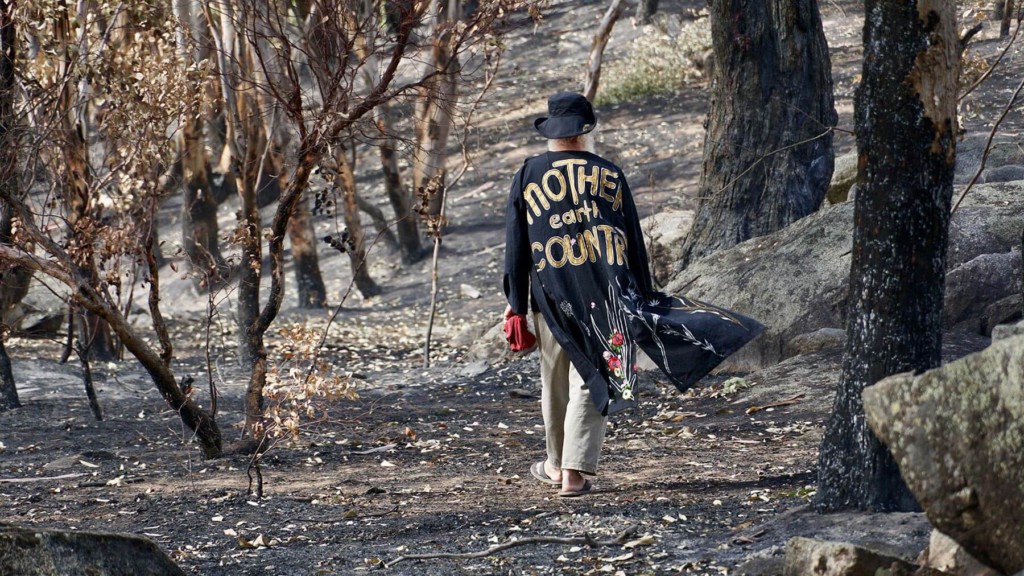
Bathurst Regional Art Gallery will display the artwork series Mother’s Little Helpers by Karla Dickens Saturday 31 July until Sunday 19 September. The work was recently donated to the BRAG collection.
Mother’s Little Helpers is a body of work that addresses concerns around the environment and the land, particularly climate action. The works were created in partnership with Bunurong, Tasmanian and Yuin man Bruce Pascoe, a farmer, educator and author of Dark Emu. The body of work consists of a short film, a series of costumes and a series of photographic prints, all will be on display in BRAG.
For the short film, Dickens worked with Pascoe, Blacklock Media and a group of Aboriginal primary students from Bingara Central School. The filming took place near Bingara, Gamilaaraay Country, with Pascoe dressed in a robe with ‘Mother Earth Country’ embroidered on, the students wearing capes with words ‘Listen’, ‘Care’, ‘Learn’, ‘Culture’, ‘Respect’, and ‘Protect’ embroidered on them. They walk around the land, in eerie silence broken only by the occasional wisps of wind and buzzing of blowflies.
Mother’s Little Helpers was developed as a project through the Kandos Cultural School of Adaptation and presented at Cementa 19 in Kandos.
Karla Dickens is a Wiradjuri multidisciplinary artist based in Lismore whose work explores identity, politics and national history. Dickens has been the winner and finalist in a number of awards including Bundjalung Art Award and the Parliament of New South Wales Aboriginal Art Award, her work is in private and major public collections around Australia including the National Gallery of Australia, the Art Gallery of NSW and the National Portrait Gallery.
Another World
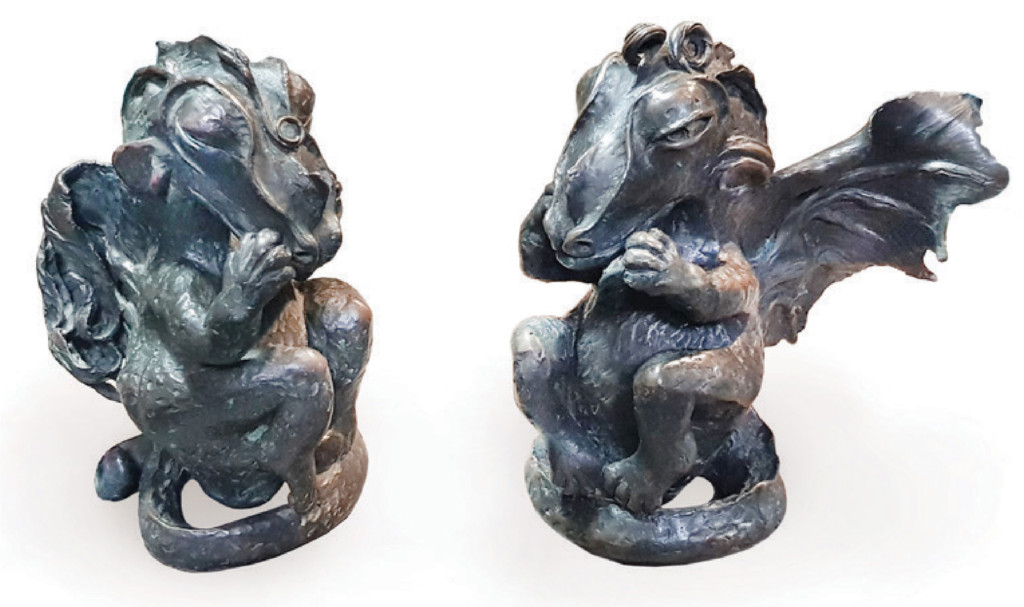
Bathurst based artists Colin Fenn and Karin Smith have been collaborating for over a decade, both working within sculpture and bronze casting. Each artist has developed their own unique style and approach to figurative bronze; an artistic tradition stretching back thousands of years.
The artists use the ‘lost wax method’ to create their bronze sculptures. Beginning with an initial wax sculpture, it is then coated in a ceramic layer and the wax melted out, creating a mould into which the hot, liquid bronze is poured. Once cleaned up, the artists polish and may patina the sculpture, by applying a chemical solution with a flame torch or applied as a cold liquid, to add colour and texture to the metal.
Fenn’s whimsical fantasy characters and intricately decorated armour are relics from an imaginary world, presenting a humorous interpretation of real-world mythology with elements of history. In contrast, Smith’s expressive studies of the human form put her own twist on the tradition of classical figurative statues, instead choosing to depict casual, imperfect poses of ordinary people.
Together, the human figures mingle with the mischievous creatures, creating a clash of worlds which alludes to new narratives and suggest conversations for the viewer’s interpretation.
Colin Fenn has been sculpting wood, stone and metal since the 1980s from his studio in Duranama, his artworks are influenced by people he sees in town as well as from fantasy literature such as Lord of the Rings and The Hobbit.
Karin Smith works in primarily figurative and representational art forms including still life and landscapes across painting, drawing, printmaking and sculpture.
Entry to BRAG is free, opening hours are Tuesday to Friday 10am – 5pm, Saturday, Sunday, and public holidays 10am – 2pm, closed Monday.


